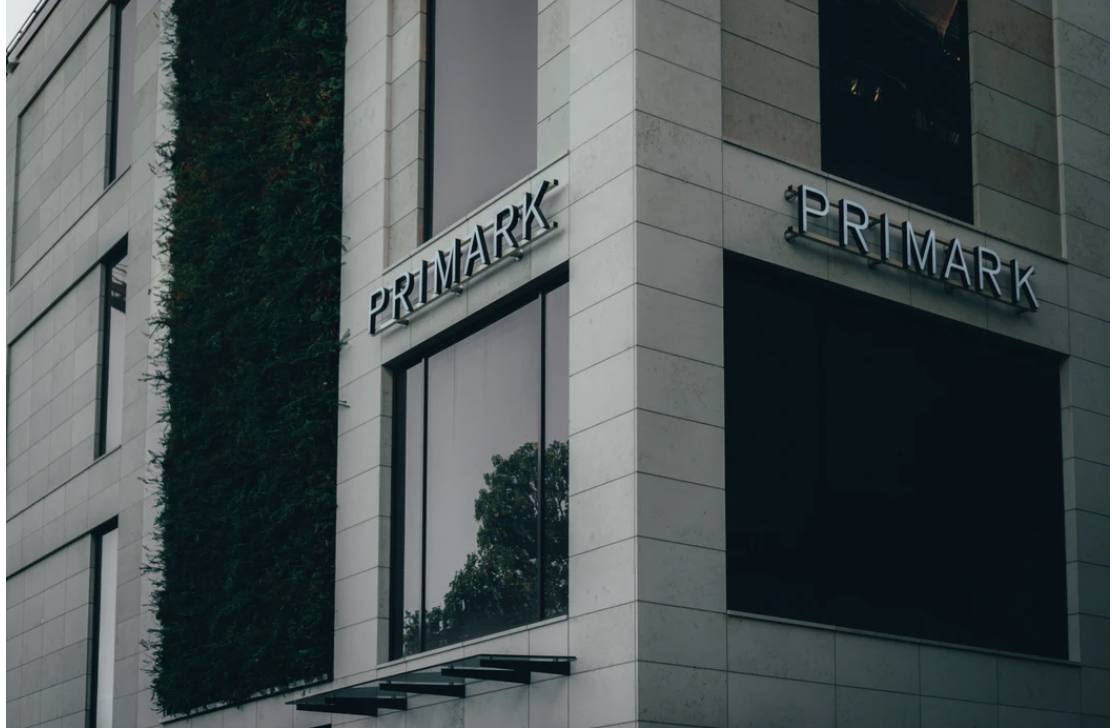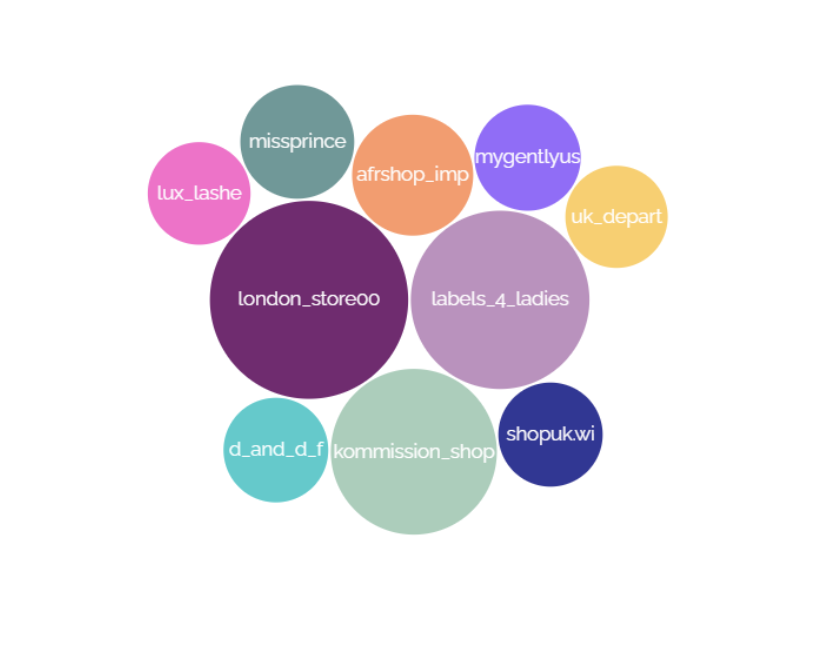No-Sell Social: How Primark Maximised Its Online Presence During Lockdown
Primark: one of the staples of any British high street. But what happens when a pandemic forces its consumers to lock down, abandon the high street, and move their shopping habits online? How has Primark, a company which has long resisted the pressure to move sales online, continued to thrive?
On March 23rd 2020, Primark closed all of its 188 UK stores. Its profits fell to zero. And yet, Primark is still a brand on everyone’s lips. With data and insights from Maybe*, we’ve taken a deeper look into Primark’s social media strategy throughout lockdown and on return to life post-lockdown to uncover the secrets to their unrivaled success.
A Multi-Platform Presence
“Wherever the customers were, they had it covered.”
Maybe* monitors the Facebook, Instagram and Twitter of Primark and reported that, unsurprisingly, the company posted consistently across all three of the platforms during lockdown. Much of the same video and visual content was used across Instagram and Facebook, with Instagram content often making it onto Facebook; a sign that Primark identified Instagram as the platform where most of its customers are. Although Primark continued to engage with their customers across all platforms, Twitter seems to be the platform where they’ve been doing much of their one-on-one and customer care correspondence, while Instagram and Facebook are the centre of their creative social media and influencer content.
Another key element of Primark’s social media success is their speed in trying out and utilising new platforms and trends. For instance, Maybe* noted that throughout lockdown Primark posted TikTok videos to their social media platforms, as well as being quick to try new platform features such as Instagram Reels. The sharing of TikTok videos in particular demonstrates that Primark is aware of and actively engaging with its young demographic.
Relevance, Entertainment and Engagement
“They weren’t selling just because their stores were closed…”
For many businesses, an instinctive reaction to losing 100% of your profits during lockdown may have been to start selling and pushing products on social media. Of course, for businesses like Primark who didn’t have the pre-existing online infrastructure in place to support e-commerce, this would not have been an option. Whilst customers were aware (though frustrated) that Primark would not be selling their products online, this didn’t stop the brand from garnering a community and creating hype around their products on social media. Ultimately, their clever use of social media strategy drove people back into their shops in huge numbers post-lockdown and ensured that their profits didn’t suffer too much of a hit.
Whilst Primark did acknowledge the changing lives and difficulties of its customers as a result of the pandemic, they primarily adopted a ‘business as usual’ approach. They knew what they were doing on social media pre-lockdown was working and so they continued with it. Specifically, Primark focused on producing and reposting content which highlighted entertaining and relevant topics, such as self-care, beauty tips and tricks, celebrating a birthday at home, and adapting to working from home. As a brand which already draws in customers with its affordable prices, this avoidance of pushing sales on customers also ensured that they were retaining and really understanding their audience’s needs and interests amidst the uncertainty of lockdown. They also occasionally dedicated posts to key societal issues - an issue which is central to debates within marketing strategy right now - in order to show solidarity with groups such as key workers and the LGBTQ+ community.
“Primark continued to share updates with customers, be supportive, and be very present.”
Statistics from Maybe* show that, during the period from March 1st to April 18th 2020, Primark posted to Facebook, Twitter and Instagram 464 times and amassed 859,000 engagements. Following suit with many other businesses, they signified the pause of non-essential communications the week that lockdown measures were expected to be mandated by not posting anything on March 17th. Throughout lockdown, Primark kept its finger on the pulse of its customers, posting an average of 10 times per day and keeping content upbeat and relevant.
So what did Primark do when their stores reopened on June 15th? Throughout June and July, their content levels halved to an average of 5 posts per day, which could be interpreted as a reflection of caution. Although stores were reopening, it would be a totally different experience for shoppers. There would be social distancing measures in place and limited numbers of customers allowed in stores, so Primark may have felt the responsibility to not overly promote or encourage large numbers of consumers back all at once. Equally, their marketing teams may have had other priorities. However, the engagement figures from Maybe* show that throughout
August and September Primark has climbed to well over its lockdown and even its pre-lockdown engagement levels.
“Primark has the opportunity to deliver the most relevant content to the audiences following departmental feeds.”
On Instagram, Primark has a combined following of 10.6 million people. This includes their main account along with specific departmental accounts for homeware (which accounts for 1.2 million followers), beauty, mens and kids. Primark uses its primary Instagram page as a hub to showcase what is going on across the departmental feeds. This content is tagged using the departmental hashtags and handles and includes new releases as well as links to blogs and influencer content. The departmental feeds presumably give Primark the opportunity to create more content and deliver content which is more relevant to specific audiences. In terms of engagement, Maybe* notes that the beauty and home accounts see similar levels of engagement to Primark’s main feed, whereas kids and mens pages see slightly lower levels of engagement.
“Primark always reshares the content from its influencers…”
As we’ve demonstrated above, part of Primark’s huge social media success is their ability to share relevant and relatable content tailored to their consumers. Regardless of lockdown, another way that Primark has always done this is by resharing the content from its influencers across all departments. This not only allows the influencers to benefit from the engagement on the content, but also allows Primark to reach their influencers’ audiences. To ensure that it’s not always the same face appearing on people’s news feeds, Primark uses different influencers for different departments. The graphic below produced by Maybe* based on their influencer report shows the social media accounts creating the most volume of conversation about Primark throughout August and September this year.
E-Commerce: Inevitable or Unnecessary?
“Primark and B&M bargains are two brands that outperform the retail sector with no ecom - why change?”
Primark is one of the few businesses that has resisted the trend of moving to e-commerce, both before and during lockdown. To some, this may seem like a missed opportunity, but Maybe* suggests that if Primark were to move their price point online, they would surely lose money. Conversely to online-only companies like ASOS and Amazon, Primark’s natural home is not online; it’s on the high street. Plus, if companies as large, successful and industrially prepared as Amazon still struggle to make money from retail sales alone then Primark is in a superior position. With a hugely successful social media strategy and consumers still queueing to get into their shops post-lockdown, what they’re doing is clearly working. So, why change it?
“Primark will continue to maintain their customer connection through social media - they are streets ahead there.”
With the future of the high street increasingly uncertain, one thing is for sure: Primark is here to stay.
This feature was written in association with Maybe. To learn more about Maybe*, click here.






















